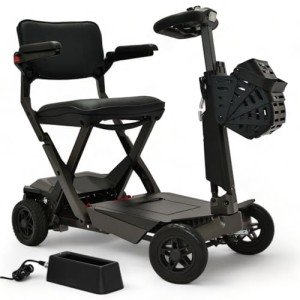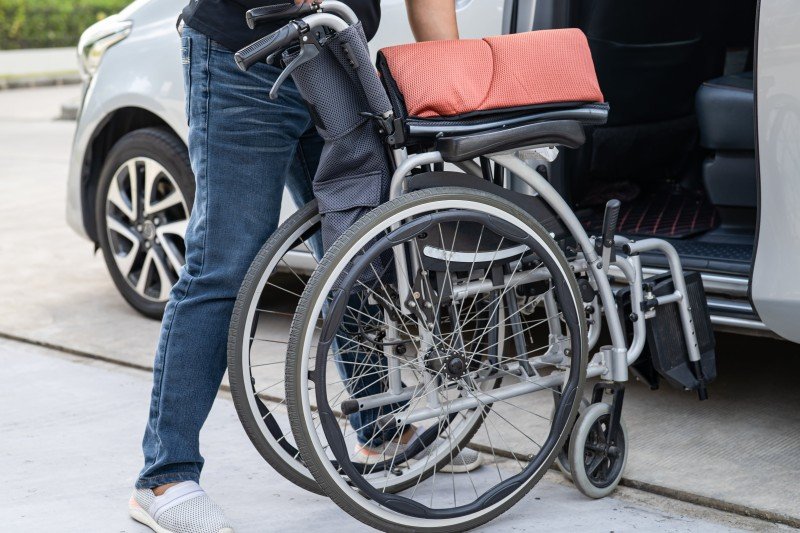Navigating the Journey: A Comprehensive Guide to Buying a Mobility Scooter
In a period where mobility is critical, the significance of availability tools like mobility scooters can not be overemphasized. These devices use self-reliance and liberty to people who may otherwise discover it challenging to move around. Whether you're a senior looking to keep an active lifestyle, somebody recuperating from an injury, or an individual with a disability, a mobility scooter can be a game-changer. This guide intends to provide a detailed introduction of the aspects to consider when buying a mobility scooter, guaranteeing you make a notified and confident choice.
Understanding Mobility Scooters
A mobility scooter is a battery-powered gadget developed to help individuals with mobility issues. They come in numerous types, each tailored to different needs and environments. The main elements of a mobility scooter include the frame, motor, battery, and controls. They can be classified into three main types:
- Travel Scooters: Compact and lightweight, these scooters are designed for easy transportation and storage. They often come with features like disassemblable parts, making them perfect for travel.
- Front-Wheel Drive Scooters: These are normally more inexpensive and appropriate for indoor and smooth outside surface areas. They are perfect for short ranges and casual usage.
- Rear-Wheel Drive Scooters: Built for sturdiness and power, these scooters are best for outside usage and longer ranges. They offer better stability and can deal with rougher surface.
Secret Factors to Consider
When buying a mobility scooter, numerous factors need to be considered to guarantee it fulfills your specific requirements and choices.
Intended Use
- Indoor vs. Outdoor: Determine where you will primarily use the scooter. Indoor scooters are typically lighter and more maneuverable, while outside scooters are built for sturdiness and can manage rougher surfaces.
- Distance: Consider the maximum distance you need to take a trip. Some scooters have a range of just a few miles, while others can increase to 30 miles or more on a single charge.
Size and Weight
- Frame Size: Ensure the scooter is the right size for you. Adjustable seats and tillers (guiding columns) can boost comfort and fit.
- Weight Capacity: Check the weight capacity of the scooter to guarantee it can safely support your weight.
Battery and Charging
- Battery Type: Most scooters utilize lead-acid or lithium-ion batteries. Lithium-ion batteries are lighter and have a longer life-span however are more expensive.
- Charging Time: Consider the length of time it requires to charge the battery and whether you have access to a convenient charging place.
Features and Accessories
- Seating: Look for a comfortable, adjustable seat with great back assistance.
- Storage: Some scooters include baskets or storage compartments for bring individual products.
- Safety Features: Features like headlights, taillights, and brakes can enhance safety, especially for outdoor use.
Spending plan
- Cost: Mobility scooters can range from a couple of hundred to numerous thousand dollars. Set a spending plan and search for designs that offer the best value for your cash.
- Upkeep: Consider the continuous costs of upkeep, such as battery replacement and routine maintenance.
Steps to Buying a Mobility Scooter
Research study and Compare

- Online Reviews: Read reviews from other users to get a concept of the scooter's efficiency and reliability.
- Manufacturer Websites: Visit the sites of credible manufacturers for more information about their products and customer support.
Test Drive
- Regional Dealerships: Visit regional car dealerships to check drive different models. This will assist you get a feel for the scooter's handling and convenience.
- Ask Questions: Don't think twice to ask the salesperson about the scooter's features, upkeep requirements, and service warranty.
Consult a Healthcare Professional
- Medical Advice: If you have specific medical conditions, seek advice from a healthcare professional to make sure the scooter fulfills your requirements.
Consider Insurance and Assistance
- Insurance: Check if your medical insurance covers the expense of a mobility scooter.
- Government Assistance: Some federal government programs use financial assistance for mobility help.
Make the Purchase
- Service warranty: Ensure the scooter features a comprehensive warranty that covers both parts and labor.
- Delivery and Setup: Arrange for shipment and setup if the scooter is not portable.
Frequently asked questions
Q: What is the difference between a mobility scooter and a power wheelchair?
- A: A mobility scooter is typically utilized for outdoor and longer distances, while a power wheelchair is more ideal for indoor use and has a smaller sized turning radius. Mobility scooters are normally much easier to operate and have a more open style, whereas power wheelchairs offer more assistance and are better for users with restricted upper body strength.
Q: How do I select the ideal size mobility scooter?
- A: Measure your height and weight to guarantee the scooter can accommodate you conveniently. Try to find models with adjustable seats and tillers to tailor the fit. Test driving the scooter can likewise help you determine if it is the ideal size.
Q: Can I utilize a mobility scooter on public transportation?

- A: Many public transport systems, including buses and trains, are geared up to accommodate mobility scooters. Nevertheless, it's a good idea to inspect the specific guidelines and requirements of your regional transit authority.
Q: How typically do I need to charge the battery?
- A: The frequency of charging depends on the battery type and the distance you take a trip. A lot of scooters can go 10-30 miles on a single charge. It's a good practice to charge the battery after each usage to preserve its lifespan.
Q: What upkeep is required for a mobility scooter?
- A: Regular upkeep consists of checking the battery level, tire pressure, and brake function. It's also important to clean the scooter and keep it devoid of particles. Follow the producer's guidelines for more detailed upkeep guidelines.
Buying a mobility scooter is a significant investment that can significantly improve your quality of life. By considering the aspects described in this guide, you can find a scooter that satisfies your requirements and provides the liberty and independence you deserve. Whether you're exploring the outdoors or browsing your day-to-day regimen, a well-chosen mobility scooter can be a trusted companion on your journey.
Extra Resources
- Mobility Scooter Reviews: Websites like Consumer Reports and MobilityScooterExpert provide in-depth reviews and contrasts of various models.
- Local Support Groups: Join regional assistance groups for individuals with mobility concerns to share experiences and get suggestions.
- Federal government Programs: Check with regional federal government agencies for programs that offer monetary support for mobility aids.
By taking the time to research and make a notified decision, you can enjoy the lots of benefits of a mobility scooter and continue to live an active and fulfilling life.







